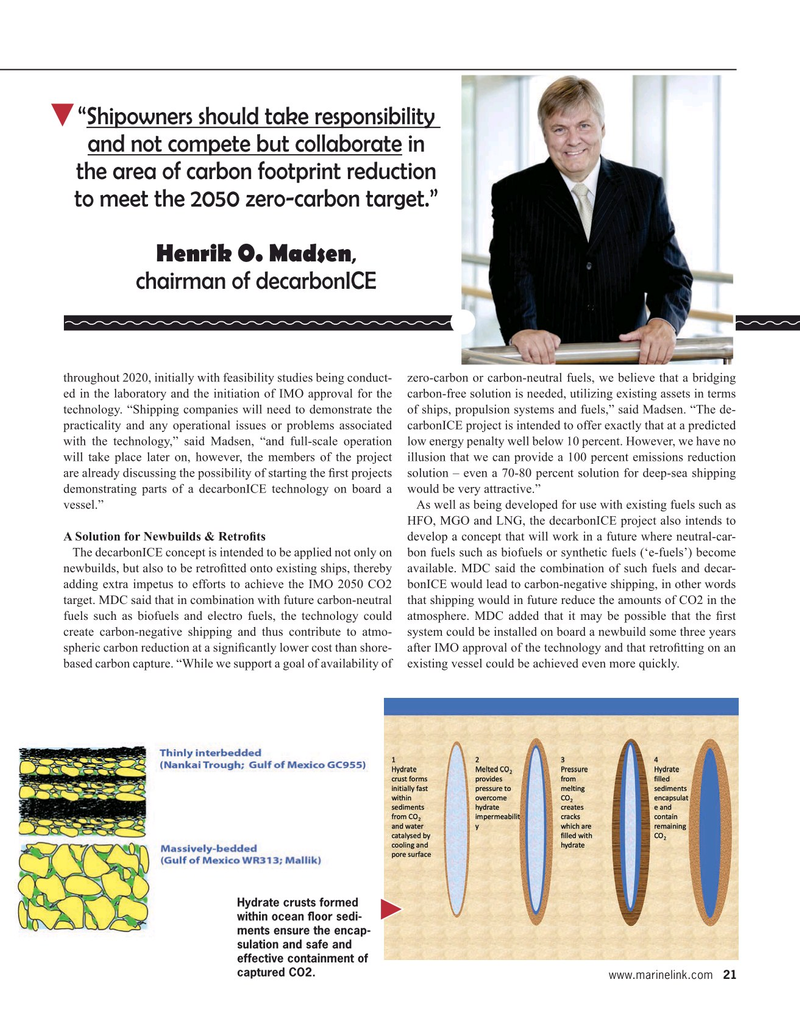
Page 21: of Maritime Reporter Magazine (April 2020)
Offshore Energy Edition
Read this page in Pdf, Flash or Html5 edition of April 2020 Maritime Reporter Magazine
“Shipowners should take responsibility and not compete but collaborate in the area of carbon footprint reduction to meet the 2050 zero-carbon target.”
Henrik O. Madsen, chairman of decarbonICE throughout 2020, initially with feasibility studies being conduct- zero-carbon or carbon-neutral fuels, we believe that a bridging ed in the laboratory and the initiation of IMO approval for the carbon-free solution is needed, utilizing existing assets in terms technology. “Shipping companies will need to demonstrate the of ships, propulsion systems and fuels,” said Madsen. “The de- practicality and any operational issues or problems associated carbonICE project is intended to offer exactly that at a predicted with the technology,” said Madsen, “and full-scale operation low energy penalty well below 10 percent. However, we have no will take place later on, however, the members of the project illusion that we can provide a 100 percent emissions reduction are already discussing the possibility of starting the frst projects solution – even a 70-80 percent solution for deep-sea shipping demonstrating parts of a decarbonICE technology on board a would be very attractive.” vessel.” As well as being developed for use with existing fuels such as
HFO, MGO and LNG, the decarbonICE project also intends to
A Solution for Newbuilds & Retrofts develop a concept that will work in a future where neutral-car-
The decarbonICE concept is intended to be applied not only on bon fuels such as biofuels or synthetic fuels (‘e-fuels’) become newbuilds, but also to be retroftted onto existing ships, thereby available. MDC said the combination of such fuels and decar- adding extra impetus to efforts to achieve the IMO 2050 CO2 bonICE would lead to carbon-negative shipping, in other words target. MDC said that in combination with future carbon-neutral that shipping would in future reduce the amounts of CO2 in the fuels such as biofuels and electro fuels, the technology could atmosphere. MDC added that it may be possible that the frst create carbon-negative shipping and thus contribute to atmo- system could be installed on board a newbuild some three years spheric carbon reduction at a signifcantly lower cost than shore- after IMO approval of the technology and that retroftting on an based carbon capture. “While we support a goal of availability of existing vessel could be achieved even more quickly.
Hydrate crusts formed within ocean foor sedi- ments ensure the encap- sulation and safe and effective containment of captured CO2. www.marinelink.com 21

 20
20

 22
22
